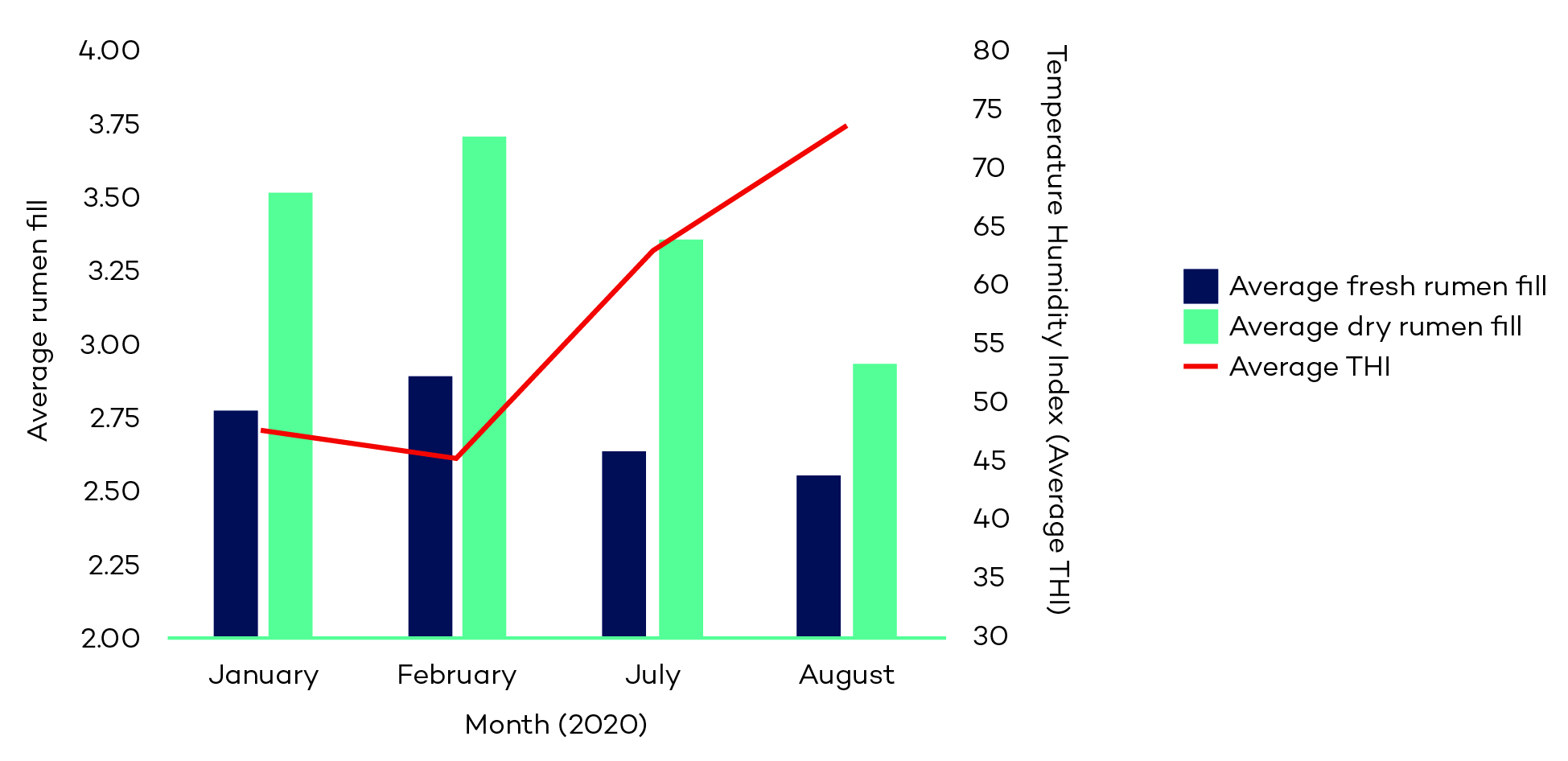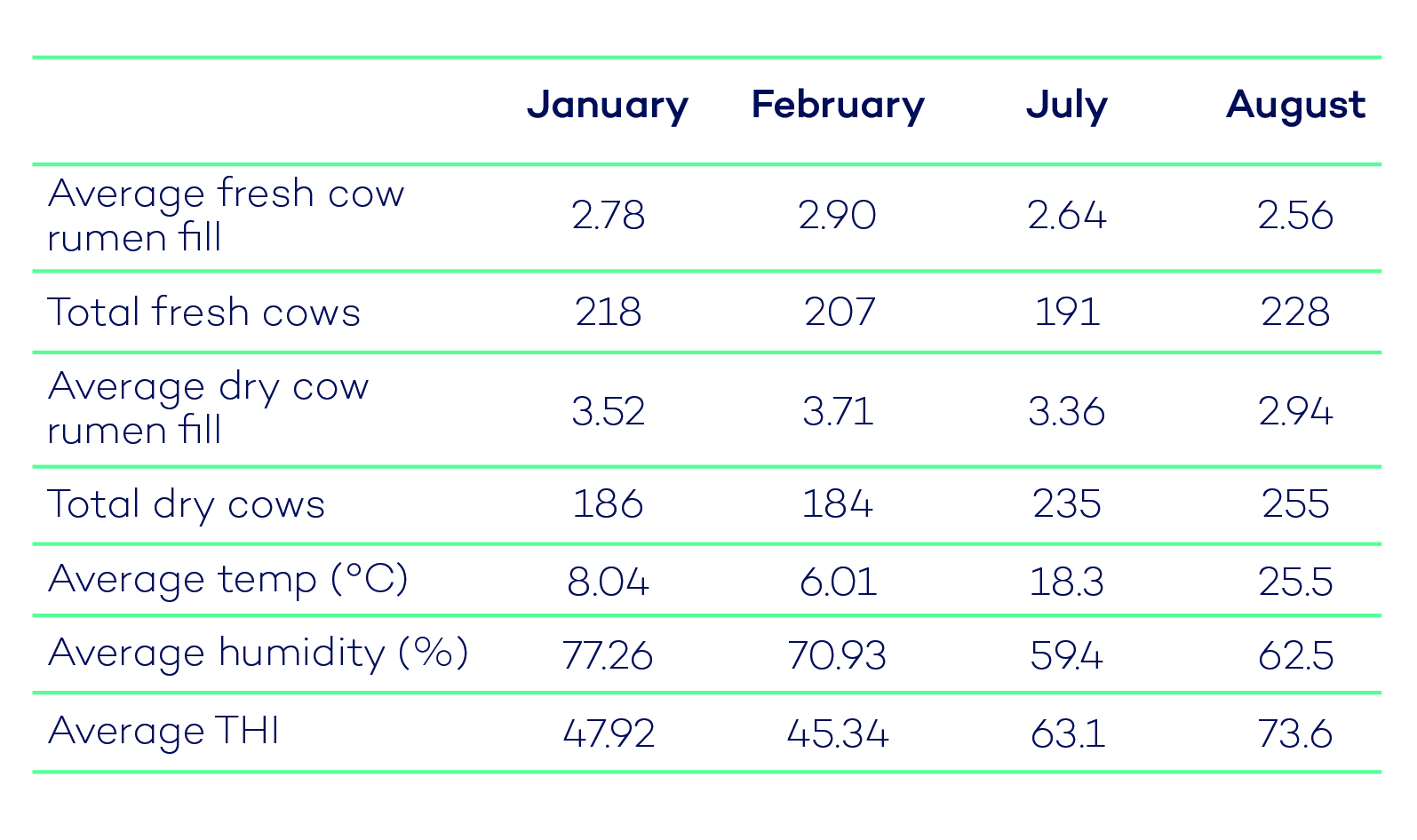
Heat Stress in Dairy Cattle – So what?
- Home
- Heat stress in dairy cattle – so what?

Heat stress is a subject that we all know about, are often bored of hearing about and don’t always take as seriously as we should… because in reality, what can we do about it? Unless it can be consistently monitored and the problem recognised in our herds when it happens, it is unlikely to be something you worry about until it is too late.
Heat stress in dairy cattle has long been documented to cause a plethora of problems, from reduced rumination, weakened immune function and increased cell counts to a significant disruption to herd fertility, reduced milk yield and milk quality. For the UK herd, a combination of any of these issues is going to be a major problem.
Cows show signs of heat stress when temperatures are above 22 degrees Celsius and a relative humidity above 60%, the combination of which is known as the Temperature Humidity Index (THI). Obviously, significantly higher temperatures can induce heat stress at lower levels of humidity and vice versa. THI is commonly used to assess the risk of heat stress on cows. Most research shows heat stress occurs for production cows when it reaches between THI >68-72. However, a recent study suggested that, for transition cows, a THI as low as 65 can incur negative effects of heat stress.
The Transition Management System (TMS) gives farmers the ability to watch their cows transition month by month and dig deep into a multitude of areas affecting their individual farm, such as cow comfort, seasonal affects, and cost of transition to name a few. TMS is not a ‘one size fits all approach’, we work collaboratively with farmers and their nutritionists/vets/employees to improve cow production, welfare and profits, based on their herd, their cows, their system, their set up, and their nutritional plans.
During the 2020 Covid-19 lockdown, we analysed 6 years’ worth of on-farm data and hosted various webinars, feeding back our multitude of findings to our customers and farmers. This data has become increasingly useful as it has been extended over subsequent hot summers.
Post lockdown, we reviewed data for rumen fill for both dry and fresh cows from farms during the peak of the summer heatwave in July and August 2020 and compared that with data from the same farms recorded during the low heat stress months of January to February 2020:


Our recent data analysis showed that dry cow rumen fill heavily affects transition success, milk yield and milk quality post-calving as follows:
Furthermore, dry cow rumen fill <3 is linked to almost every metabolic transition disease post-calving:
In addition, we found that cows are more likely to maintain poorer rumen fills through the fresh period based on her dry cow rumen fill score, causing a lasting effect on milk yield.
For example: A dry cow with a rumen fill of 2 will likely be a fresh cow 2.6,
This means herds need a higher proportion of dry cows with a RF 4 or more to safely achieve the realistic and desirable RF of 3+ in a fresh cow.
In August, only 15% of dry cows scored on TMS achieved rumen fill scores of 4, 3 times less than low THI months Jan (46%) and Feb (55%) and 2.5 times lower than the previous month July (38%). As mentioned, dry cows are more likely to maintain poorer rumen fills through the fresh period. As we found that only 15% of the dry cows assessed achieved a rumen fill of 4, it is likely that a high proportion of the remaining 85% will struggle to hit fresh rumen fills of 3 and are therefore at risk of reduced production and metabolic problems.
Additionally the proportion of fresh cows achieving rumen fill 4 in August were four times less than previous months and suggests that fresh cows may be less willing to get up and feed under heat stress, which could further damage the predicted rumen fill fall for those soon to be fresh cows.
With the recognition that heat stress is a real problem for many UK dairy farms being only recently accepted, a few recently built dairy have introduced cooling systems. Whilst this helps, it is important that not only is good rumen fill in both dry and fresh cows encouraged as best we can, but that sound nutritional techniques are implemented to help transition cows cope where stress is a problem.
Once practical items that help encourage rumen fill have been considered, it is important to then help to support cow metabolism and health during this time. We recommend focusing on:
It is obvious now that heat stress is a real problem on UK dairy farms and for longer than previously thought. It is important that the risks of heat stress are reduced or, where heat stress can’t be controlled, it’s vital that the cow’s metabolism is supported so that critical production/profit is not lost from our industry.
Ashley Morris
Commercial Ruminant Nutritionist